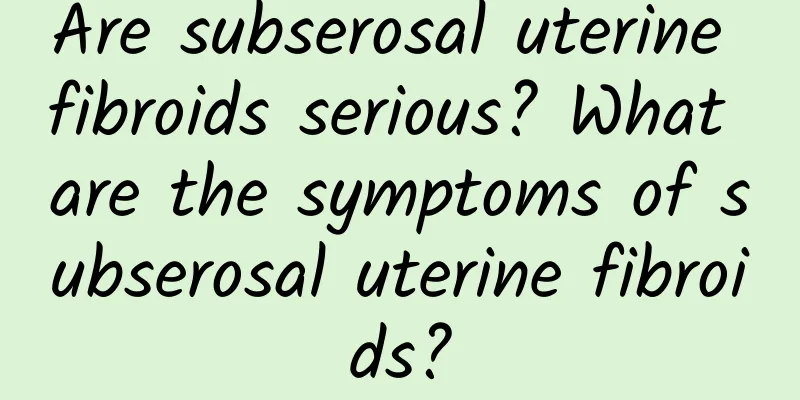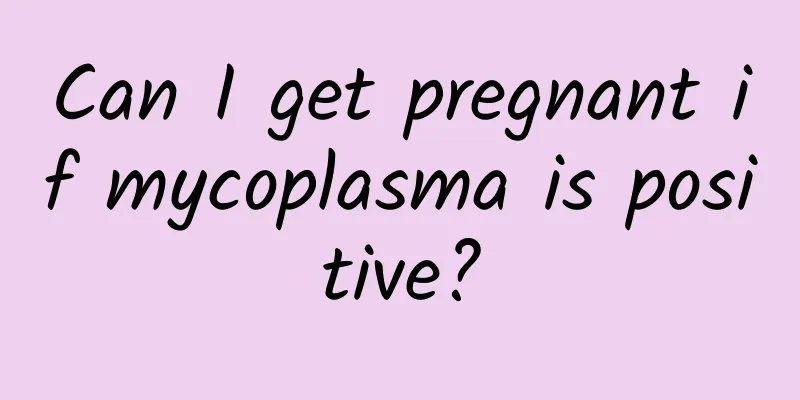Are subserosal uterine fibroids serious? What are the symptoms of subserosal uterine fibroids?

|
Uterine fibroids are very common gynecological diseases. In addition to intramural fibroids, which are the most common, there are also many submucosal fibroids, accounting for about 20% of fibroids. According to experts, common uterine fibroids are divided into intermural fibroids, submucosal fibroids, and subserosal fibroids according to their growth locations. So, are subserosal uterine fibroids serious? When the fibroids between the uterine muscle wall grow to the vegetable membrane layer on the surface of the uterus, so that the surface of the fibroids is only covered with a little muscle wall and serosa, it is called subserosal fibroids. It accounts for about 20%-30% of the total number of uterine fibroids. Due to the protrusion of the fibroids, the uterine cavity is enlarged, the appearance is irregular, the surface is uneven, and the nodularity. When the fibroids continue to grow under the serosa, forming a pedicled subserous fibroid connected to the uterine wall. Due to the obstruction of blood supply, the tumor necroses, and the patient will experience abdominal pain and fever. If the fibroid pedicle breaks, the fibroid falls off in the pelvic and abdominal cavities, and adheres to adjacent organs such as the greater omentum and mesentery to obtain blood supply, it is called a parasitic fibroid or a wandering fibroid. When the fibroids grow on the walls of both sides of the uterus and grow in the broad ligaments on both sides of the uterus, they are called broad ligament fibroids. This type of fibroid often compresses the nearby ureters, bladder, and iliac blood vessels, causing corresponding compression symptoms. Common symptoms of subserosal fibroids: increased menstruation, lower abdominal mass, increased vaginal discharge, etc. Symptoms of subserosal uterine fibroids are common in larger intramural fibroids. Due to the increase in the uterine cavity, increased glandular secretions and increased leucorrhea, submucosal fibroids are accompanied by infected leucorrhea, and sometimes the symptoms of subserosal uterine fibroids can be bloody. Pain: Symptoms of subserosal uterine fibroids are abdominal pain, backache, and dysmenorrhea. Symptoms of subserosal uterine fibroids are also manifested as lower abdominal swelling or back pain, which is not too serious. |
<<: Is uterine fibroids serious? What are the treatments for uterine fibroids?
>>: Is intramural uterine fibroids serious? What should I do if I have intramural uterine fibroids?
Recommend
Where does an ovarian cyst usually hurt?
The pain location of ovarian cysts may vary depen...
Typical symptoms of intrauterine adhesions
Typical symptoms of intrauterine adhesions includ...
Pay attention to the diet of patients with ovarian cysts
Understanding the dietary needs and taboos of pat...
Create a slender waist! 3 Teas to reduce waist and abdominal fat
Kun Ling, who has officially become a wife recent...
Pay more attention to the causes of frequent dysmenorrhea
Dysmenorrhea is also a common phenomenon. The cau...
Dietary considerations for patients with cervical erosion
Cervical erosion is not a separate disease, but a...
Progesterone and estrogen trials should be done in patients with amenorrhea
Amenorrhea is a common cause of female infertilit...
What foods and fruits should not be eaten for uterine fibroids?
Uterine fibroids are a common gynecological disea...
Biopsy What are the symptoms of chronic cervicitis? There are four main symptoms of chronic cervicitis.
The symptoms of chronic cervicitis are diverse, t...
Diet after miscarriage
Women are often very weak after miscarriage, and ...
Symptoms of ectopic pregnancy on the ovary
Symptoms of ectopic pregnancy on the ovaries are ...
The causes of atrophic vulvar leukoplakia include these aspects
There are many types of vulvar leukoplakia, and a...
Is it true that painless abortion is painless?
Is painless abortion painless? Are those advertis...
Why are female friends so prone to cervical erosion?
What are the reasons why women are prone to cervi...
Is eating warm yogurt more effective for losing weight and regulating the intestines? Nutritionist Quick Hack…
People who like to eat yogurt can drink a cup of ...









